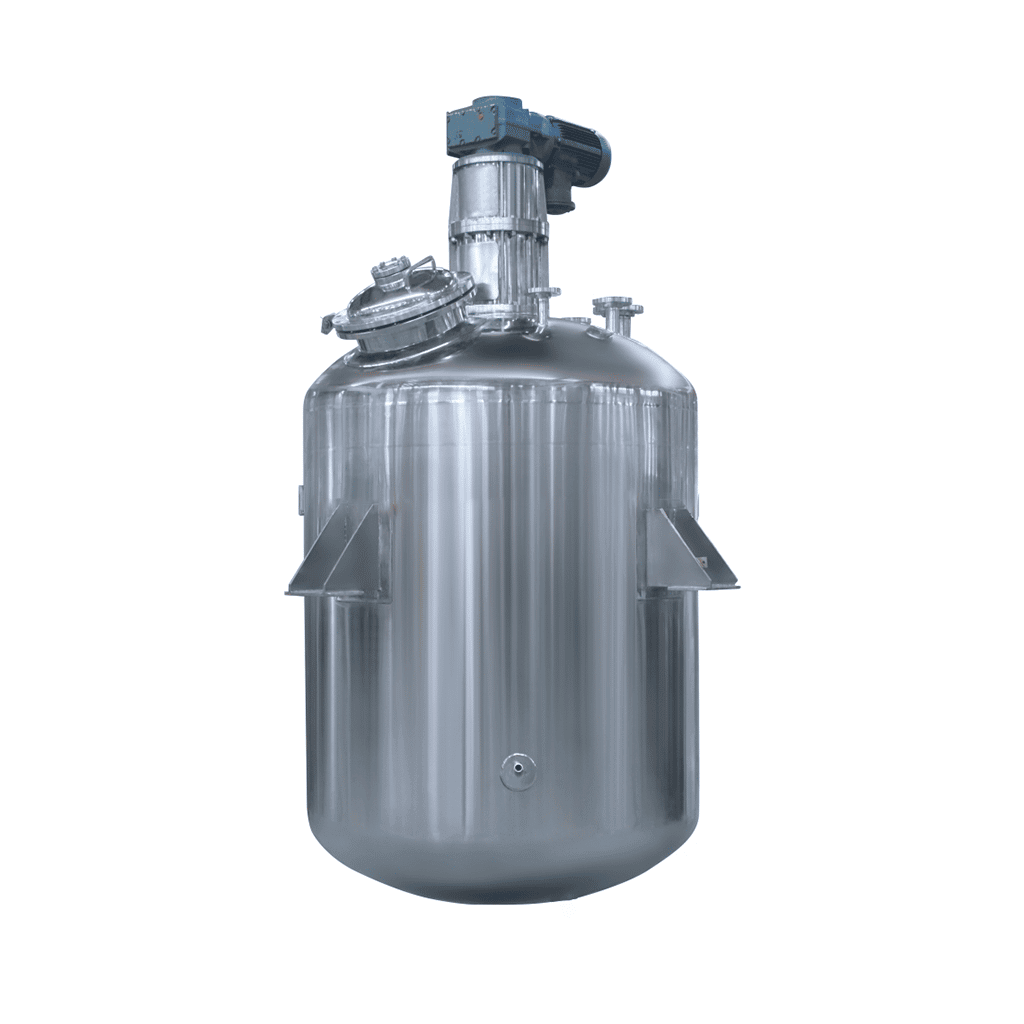

-24-1.jpg)
Stainless Steel Reactor
Stainless Steel Reactor: used in dairy products, sugar, beverages, and other fields
Material
stainless steel (316, 304)
Capacity (L)
10-10000+
Mixing system
anchor, paddle, frame and others
Heating system
electric heating, oil heating and others
A stainless steel reactor is a stainless steel container equipment. The stainless steel reactor consists of a kettle body, a kettle lid, a stirrer, a jacket, a bracket, a transmission device, a shaft seal device, etc. Materials and openings can be made according to user needs and process requirements. Stainless steel reactors are mainly used for stirring, homogenizing, and mixing storage of dairy products, sugar, beverages, food, and various pharmaceuticals.
Request a quoteThe stainless steel reactor not only has the ability to resist atmospheric oxidation, that is, the ability to prevent rust, but also has the ability to resist corrosion in media containing acids, alkalis, and salts, that is, corrosion resistance. Its corrosion resistance varies with the chemical composition of the stainless steel reactor, mutual addition state, use conditions, and environmental medium type.

The 304 stainless steel reactor has excellent corrosion resistance in a clean and dry environment, but in coastal areas, where there is more salt in seawater fog, it will rust quickly, while the 316 stainless steel reactor has better performance. Therefore, no stainless steel is corrosion-resistant and will not rust in any environment.
The stainless steel reactor body relies on the formation of a very thin, strong, dense, and stable chromium-rich oxide film (protective film) on its surface to prevent oxygen atoms from continuing to penetrate and oxidize, thereby obtaining corrosion resistance. Once this film is continuously damaged for some reason, oxygen atoms in the air or liquid will continue to penetrate, and the iron atoms in the metal will continue to separate, forming loose iron oxide, and the metal surface will continue to rust.

Stainless steel reactor body
1.The surface of the stainless steel reactor kettle body contains dust from other metal elements or attachments of foreign metal particles. In humid air, condensation between the attachment and the stainless steel connects the two into a miniature battery, triggering an electrochemical reaction and destroying the protective film, which is called electrochemical corrosion.
2.Organic juice adheres to the surface of the stainless steel reactor kettle body and forms organic acids in the presence of water and oxygen. These organic acids will corrode the metal surface for a long time.
3.Substances containing acids, alkalis, and salts adhere to the surface of the stainless steel reactor kettle body (such as alkaline water and lime water splashed on the decorative wall), causing local corrosion.
4.In polluted air (for example, the atmosphere contains a large amount of sulfides, carbon oxides, and nitrogen oxides), sulfuric acid, nitric acid, and acetic acid liquid spots will be formed when encountering condensed water, causing chemical corrosion.
Methods to prevent rust on the stainless steel reactor kettle body
1.The surface of the stainless steel reactor kettle body must be cleaned and scrubbed frequently to remove attachments and eliminate external factors that cause modification.
2.316 stainless steel reactor is suitable for use in coastal areas and can resist seawater corrosion.
3.The chemical composition of some stainless steel pipes does not meet the corresponding standards and does not meet the requirements of 304 materials. Therefore, it will also cause rust, which requires careful selection to ensure the quality and safety of stainless steel reactor equipment.




